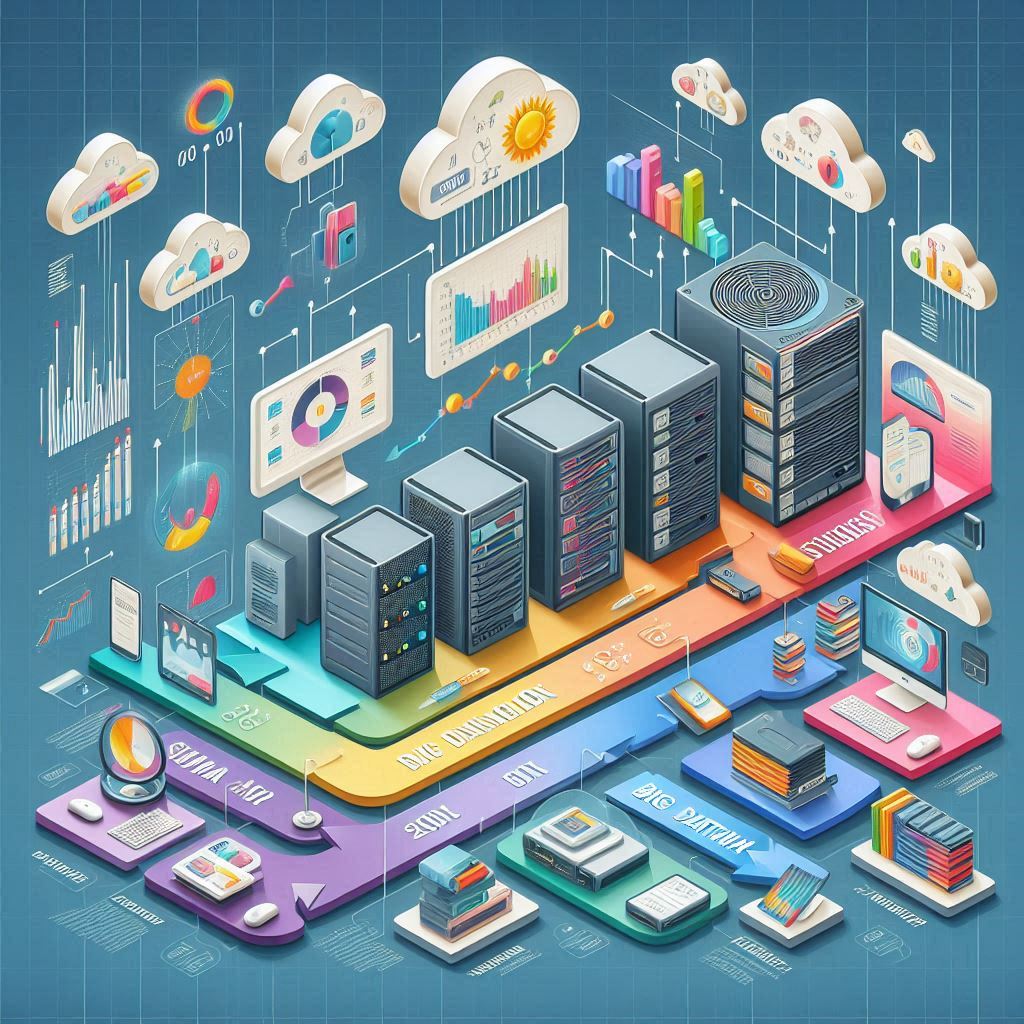The Evolution of Big Data Technologies

Early Stages (1990s-2000s)
Rise of the Internet and E-commerce: The explosion of the internet and e-commerce platforms generated vast amounts of data, revealing the limitations of traditional relational databases.
Distributed Systems Development: The need for scalable data processing led to the development of distributed computing frameworks like Hadoop. Hadoop enables the storage and processing of large datasets across clusters of machines, providing a cost-effective solution for handling massive amounts of data. It uses a distributed file system (HDFS) and a programming model (MapReduce) to process data in parallel.
Introduction of NoSQL Databases: To manage unstructured and semi-structured data more effectively, NoSQL databases like MongoDB and Cassandra emerged. These databases provide flexible schema design, high availability, and horizontal scaling, making them ideal for handling large volumes of diverse data types such as JSON, XML, and more.
Era of Analytics (2010s)
Advanced Analytics Tools: The focus shifted towards extracting valuable insights from big data using advanced analytics tools. Tools like Apache Spark and Tableau enabled faster data processing and visualization, allowing businesses to derive actionable insights from their data.
Machine Learning and Data Mining: The adoption of machine learning and data mining algorithms allowed for more sophisticated pattern recognition and predictive analytics. These techniques enabled the automation of decision-making processes and the discovery of hidden patterns within large datasets.
Cloud Computing: Cloud platforms like Amazon Web Services (AWS) and Microsoft Azure offered scalable infrastructure for data storage and processing. Cloud computing provided the flexibility to scale resources up or down based on demand, reducing the need for significant upfront investment in hardware.
Present Day
Real-time Data Processing: Tools like Apache Kafka and Apache Storm enable real-time data processing, allowing for immediate insights and actions. Real-time processing is critical for applications that require instant decision-making, such as fraud detection, recommendation systems, and IoT analytics.
Integration with IoT: The integration of big data with the Internet of Things (IoT) has led to the generation of massive data streams from connected devices. IoT devices continuously generate data that can be analyzed in real-time to optimize operations, enhance user experiences, and create new business opportunities.
Data Security and Privacy: There is an increasing emphasis on data security, privacy, and ethical considerations in the era of big data. Organizations are implementing robust security measures and complying with regulations like GDPR and CCPA to protect sensitive data and maintain user trust.
Key Technologies Contributing to Big Data Evolution
Hadoop: A distributed computing framework for processing large datasets across clusters of machines. It uses HDFS for storage and MapReduce for parallel processing, enabling the analysis of big data at scale.
NoSQL Databases: Flexible databases for storing and managing unstructured data (e.g., MongoDB, Cassandra). They offer high performance, scalability, and availability, making them suitable for handling large volumes of diverse data types.
Cloud Computing: Scalable infrastructure for data storage and processing on cloud platforms (e.g., Amazon Web Services, Microsoft Azure). Cloud services provide on-demand resources, reducing the need for physical hardware and allowing organizations to scale quickly.
Data Warehouses: Centralized repositories for storing and analyzing large volumes of structured data. Data warehouses support complex queries and reporting, enabling businesses to gain insights from historical data.
Data Lakes: Storage for raw, unprocessed data from diverse sources. Data lakes allow organizations to store vast amounts of data in its original format, providing flexibility for future analysis and machine learning projects.
Machine Learning and Artificial Intelligence: Algorithms for extracting insights and making predictions from large datasets. Machine learning and AI technologies enable organizations to automate processes, personalize user experiences, and discover new patterns in data.
References
https://www.fynd.academy/blog/evolution-of-big-data
https://www.promptcloud.com/blog/big-data-evolution-technology-modern/
https://www.extentia.com/post/the-history-and-evolution-of-big-data
https://motherduck.com/learn-more/big-data/
https://itchronicles.com/big-data/the-evolution-of-big-data-solutions/
https://www.oracle.com/a/ocom/docs/big-data/big-data-evolution.pdf
https://digital.neweratech.com/articles/the-rise-of-big-data-technologies-and-why-it-matters
https://www.tpointtech.com/evolution-of-big-data-and-its-impact-on-database-management-systems
https://www.meritshot.com/the-evolution-of-big-data-and-its-applications/
Author: Mohammad J Iqbal
